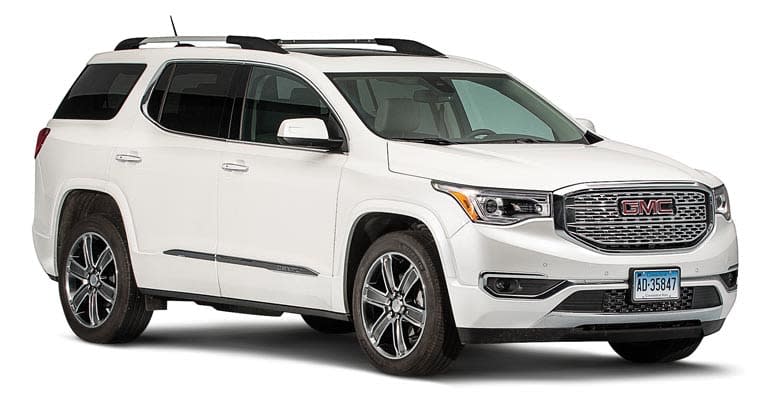Cars That Go the Distance: Consumer Reports Car Reliability Survey 2017

Consumer Reports has no financial relationship with advertisers on this site.
For pioneering consumers, nothing beats the thrill of owning something completely new. These early adopters are the ones you see lined up around the block when a next-generation smartphone is released or racing to the dealership when a redesigned or new car model rolls into showrooms.
But our Annual Reliability Survey, in which consumers provide us with data on hundreds of thousands of cars, has consistently shown that this pioneering spirit is not without consequences. Our latest survey of about 400,000 subscribers who own 640,000 vehicles reveals that all-new or updated models are now more likely than older ones to have a wonky engine, a jerky transmission, or high-tech features that fail outright.
The problems often arise when automakers incorporate new technologies into their cars. Over the past decade, for instance, automakers have embraced new transmission technologies in an effort to improve fuel economy, says Anita Lam, associate director of data integration at Consumer Reports. “As more eight- and nine-speed and continuously variable transmissions hit the market, many owners have reported issues with them breaking down or shifting badly,” Lam says. Not all cars that have these transmissions fare poorly, but first-year models that feature them draw an inordinate number of complaints from owners in our survey.
How to Avoid New-Model Remorse
Be patient. Wait a couple of years before buying a new or redesigned model. “Being the first to own that new model can leave people with imperfect technology or without a car to drive while it sits in the shop,” Fisher says.
Buy the outgoing version. The model that’s being retired is likely to be more reliable than the brand-new one.
Consider leasing. You get the newest features, and the car is always under warranty if anything goes wrong.
Check out the brand’s reliability. Even the best automakers can sometimes release problem-prone cars, but a proven track record should reduce your fears. Our brand scores show those that owners have found to be the most and least reliable. (See “How the Brands Stack Up.”)
On the A-List . . . or on the Way Out
The reliability of a handful of models has improved enough over the past year to earn them a place on CR’s list of recommended vehicles. More than twice as many have been knocked off the list, based on declines in their Overall Score. This score reflects a car’s performance in our road tests; results from our reliability and owner-satisfaction surveys; the availability of a frontal-crash-prevention system; and, if applicable, results from independent crash tests.
Newly Recommended Models With Improved Reliability
Audi A3, Chrysler Pacifica, Ford F-150, Mercedes-Benz S-Class, Ram 1500, Volkswagen Golf Alltrack, Volkswagen Passat.
No-Longer-Recommended Models With Declining Reliability
Acura MDX, Buick LaCrosse, Cadillac CT6, Cadillac XTS, Chevrolet Camaro, Chevrolet Corvette, Chevrolet Cruze, Chevrolet Equinox, Chrysler 300, GMC Acadia, Hyundai Tucson, Mazda CX-9, Mazda MX-5 Miata, Mercedes-Benz GLC, Nissan Maxima, Porsche Cayenne, Subaru Impreza.
Redesigned 2017 Models With Major Growing Pains
These updated cars saw especially big drops in their reported reliability rating when compared with the previous model year.

Buick LaCrosse
Trouble spots: Some owners complained that the eight-speed automatic transmission that replaced the previous six-speed version caused rough shifting. They had problems with the new, nontraditional gear selector and registered their concerns about the infotainment system, complaining that the display goes blank, navigation is buggy, and phones are difficult to pair.
Learn more about the Buick LaCrosse.

GMC Acadia
Trouble spots: The main complaints from owners targeted the infotainment system, which is plagued by blank screens, a glitchy rearview camera, and an in-dash navigation system that goes kaput. Although the new Acadia retains its six-speed automatic transmission, some owners complained about rough shifting as well.
Learn more about the GMC Acadia.

Subaru Impreza
Trouble spots: The 2017 redesign, with an all-new platform, has below-average reliability compared with the previous generation’s outstanding reliability. Problems with the in-car electronics were the Subaru’s major downfall. Owners reported that the rearview camera didn’t work properly (its screen froze or was blank), the radio got no reception, and there were problems with phone pairing.
Learn more about the Subaru Impreza.
Editor’s Note: This article also appeared in the December 2017 issue of Consumer Reports magazine.
More from Consumer Reports:
Top pick tires for 2016
Best used cars for $25,000 and less
7 best mattresses for couples
Consumer Reports is an independent, nonprofit organization that works side by side with consumers to create a fairer, safer, and healthier world. CR does not endorse products or services, and does not accept advertising. Copyright © 2017, Consumer Reports, Inc.

